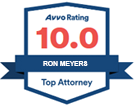Multi-vehicle collisions are often chaotic, involving several drivers, multiple vehicles, and a tangled web of responsibility. Unlike two-car accidents where fault is more straightforward, determining liability in a multi-vehicle collision can be far more complex. In the aftermath of such an accident, it’s crucial to understand how fault is established and how these determinations can affect your ability to receive compensation. In this article, we’ll explore the key factors involved in determining fault in multi-vehicle collisions, the role of evidence, and why having an experienced car accident lawyer in Olympia is essential to navigating this challenging process.
What is a Multi-Vehicle Collision?
A multi-vehicle collision, also known as a pile-up or chain-reaction accident, occurs when three or more vehicles are involved in a single crash. These accidents often happen on highways, busy intersections, or during poor weather conditions when one vehicle’s mistake leads to a domino effect of collisions.
The severity of injuries and damage in multi-vehicle collisions can be significant because vehicles are often hit from multiple angles, and the force of impact is compounded as each vehicle strikes the next. This can make it difficult to determine who is at fault for the initial collision and whether other drivers contributed to the crash.
Key Factors in Determining Fault in Multi-Vehicle Collisions
Determining fault in multi-vehicle collisions involves analyzing the sequence of events leading up to the accident and identifying which drivers were negligent. Several factors play a role in establishing fault.
Initial Cause of the Accident
In many multi-vehicle collisions, there is often an initial trigger—one driver’s negligence that sets off the chain reaction. For example, a driver who is speeding or distracted may rear-end another car, causing a ripple effect where multiple vehicles are impacted. The driver who caused the first crash is often considered primarily at fault for the resulting damages.
Contributing Factors from Other Drivers
While the driver responsible for the initial impact may bear the most responsibility, other drivers involved in the accident may also be partially at fault. For instance, if a second driver was speeding or following too closely, they may have been unable to stop in time, contributing to the severity of the pile-up. In such cases, multiple drivers can share liability, and fault may be divided among them.
Road and Weather Conditions
In some multi-vehicle collisions, poor road conditions, such as icy or wet roads, can contribute to the crash. While drivers are expected to adjust their driving based on weather conditions, these factors can complicate fault determination. Drivers may still be held liable if they were speeding or not exercising caution, even in adverse weather conditions.
Traffic Violations and Negligence
Fault is often determined based on whether any drivers violated traffic laws or acted negligently. Common negligent behaviors that contribute to multi-vehicle collisions include speeding, distracted driving, impaired driving, and tailgating. If one or more drivers are found to have violated traffic laws, they may be held responsible for their role in the accident.
The Role of Evidence in Establishing Fault
When it comes to determining fault in a multi-vehicle collision, evidence plays a crucial role. The more evidence you can gather, the stronger your case will be. Key pieces of evidence include:
- Police Reports: After a multi-vehicle accident, law enforcement will typically arrive at the scene to assess the situation and file an official report. This report often includes details about the positions of the vehicles, statements from drivers and witnesses, and any observed traffic violations. The police report can be a critical piece of evidence in determining fault.
- Witness Statements: Eyewitnesses to the accident can provide valuable insight into how the collision occurred. Witness statements can help clarify which vehicle initiated the crash and whether any other drivers contributed to the collision.
- Dashcam or Surveillance Footage: Video evidence from dashcams or nearby traffic cameras can provide a clear visual record of how the accident unfolded. This can be especially helpful in multi-vehicle collisions, where multiple vehicles are involved, and the sequence of events may be difficult to piece together.
- Accident Reconstruction Experts: In some cases, accident reconstruction experts may be called upon to analyze the crash and determine fault. These experts use evidence such as skid marks, vehicle damage, and the position of the vehicles to recreate the accident and identify which drivers were at fault.
Comparative Fault in Washington State
Washington follows a comparative fault system, which means that multiple parties can share liability for an accident. In a multi-vehicle collision, this can be particularly important, as more than one driver may have contributed to the crash. Under Washington’s comparative fault laws, each party’s responsibility for the accident is assessed as a percentage.
For example, one driver may be found 70% at fault for causing the initial collision, while another driver may be 30% at fault for following too closely and contributing to the severity of the crash. Each driver’s compensation will then be reduced by their percentage of fault. This means if you are found partially at fault, your compensation will be reduced accordingly. For example, if you are awarded $100,000 in damages but are 30% at fault, you would receive $70,000.
This system emphasizes the importance of having a skilled car accident lawyer in Olympia to help minimize your liability and maximize your potential compensation.
Why You Need a Car Accident Lawyer for Multi-Vehicle Collisions
Multi-vehicle collisions can be overwhelming and legally complex. With multiple drivers, insurance companies, and legal teams involved, determining fault and pursuing compensation requires the assistance of an experienced car accident lawyer.
A car accident lawyer in Olympia will:
- Investigate the Accident: Your lawyer will thoroughly investigate the accident, gather evidence, and consult with experts to build a strong case on your behalf.
- Negotiate with Insurance Companies: Dealing with multiple insurance companies can be frustrating and time-consuming. Your lawyer will handle negotiations to ensure you receive fair compensation for your injuries and damages.
- Represent You in Court: If a fair settlement cannot be reached through negotiation, your lawyer will represent you in court, presenting evidence and advocating for your rights.
Protecting Your Rights in Multi-Vehicle Collisions
Determining fault in multi-vehicle collisions can be a complicated process that requires careful analysis of evidence and an understanding of Washington’s comparative fault laws. If you’ve been involved in a multi-car accident, it’s essential to protect your rights by gathering evidence, understanding your legal options, and working with an experienced car accident lawyer in Olympia.
Navigating the aftermath of a multi-vehicle collision can be overwhelming, but with the right legal representation, you can secure the compensation you deserve for your injuries and damages. Don’t wait — contact our car accident lawyers today to discuss your case and ensure your rights are protected.





